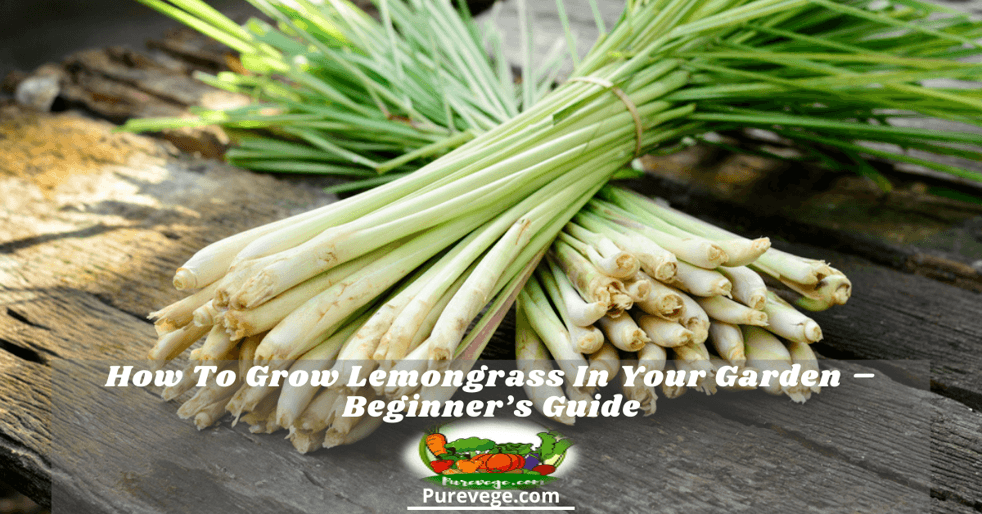How To Grow Lemongrass In Your Garden – Beginner’s Guide
Lemongrass, an herb, is used in the kitchen because of its citrus scent and flavor. This herb belongs to the tropics and thus, requires protection from cold climates. If you are thinking about how to grow lemongrass, you can grow it simply from seeds.
More...
It is so easy to grow lemongrass. After the plants are well-established, they will start propagating themselves. You will see new plants by the side of the stalks. In about 6 months, lemongrass will emerge into a shrubbier plant and will be ready to harvest. There are lots of benefits of using this plant. It causes relief from stomach and respiratory disorders, pain, insomnia, swelling, fever, and several infections. Usually, this plant is used in cooking, making curries, soups, and teas.
Different Kinds of Lemongrass
Mainly, there are two common kinds of lemongrass. These varieties belong to the Southern Asian and Indian regions.
East Indian Lemongrass
This kind of lemongrass (Cymbopogon flexuosus) grows up to 1.5 m in height. This lemongrass features visible purplish seed heads and purple tinges to the stems. You can use it in teas and cooking.
West Indian Lemongrass
This variety of lemongrass (Cymbopogon citratus) is most commonly used for cooking (crushed or chopped stalks). Its leaves are used in teas and also in perfumes. This lemongrass grows easily in warm climates and reaches about 90 cm in height.
How to Grow Lemongrass
This herb grows in abundance in places, where weather conditions resemble the ones of their tropical habitat origin. These plants prefer lots of light, moisture, and heat. Once you have provided all this, the lemongrass will thrive and propagate quickly.
Soil
The lemongrass plants like loamy, rich soil. Gardeners can make this soil by putting in various soil amendments, such as manure, leaf mold, and compost. They can add these additives while planting this plant.
Light
In the native habitat, this plant thrives in complete sun and also in humid, hot climates. Around six hours or more of straight sun every day is required to meet the energy needs of this plant. The plants that grow in shade might attract pests and will be thin.
Humidity and Temperature
As a tropical plant, lemongrass does well in steamy, hot climates. The perfect time to grow lemongrass plants outdoors is quite comparable to planting tomatoes when the night temperature falls down to the 60s. This herb is frost-sensitive. Thus, if you are thinking of overwintering the lemongrass plant indoors, you can bring it indoors before the temperature goes down to the 40s.
Water
Unlike ornamental grasses, this grass does not tolerate drought. You have to keep its roots moist all the time for better plant health. You can add a mulch layer of around 3 inches. This helps to conserve moisture and enrich your soil.
Growing from seeds
So, how to grow lemongrass from seed? In moist, warm soil, lemongrass seeds easily germinate. Press the seeds lightly in the potting mix. Also, keep the plant moist till germination takes place. The germination usually occurs within 10-14 days. Also, when your plants reach about 3 inches, separate them.
Growing in a container
Select a big container to grow lemongrass. It needs to have a 12-inch diameter for accommodating a nice root system and for preventing top-heavy plants to tip over. In cold weather, gardeners can grow one root division in small containers in sunny windowsills for keeping the plants going for the following season’s harvest.
Also, check out this video to know how to grow lemongrass in a container from its stalk easily.
Fertilizer
This grassy plant requires fertilizers that are rich in nitrogen to grow better. You can employ slow-release fertilizers like 6-4-0, which feed lemongrass during the entire growing season. Gardeners can even water their lemongrass plants using manure tea. This helps to put in trace nutrients.
Pruning
The plants of lemongrass survive for over one season thrive best from a yearly haircut. This helps in tidying up the plants and removing dead foliage. So, shear the plants around 6 inches at the water’s end, when plants lay in the resting phase. By doing so, the plants rebound rapidly and grow new shoots whenever hot weather comes back.
Harvesting
Lemongrass is one of the fast-growing herbs. Thus, they can endure harvest while plants are still young without having bad effects on their growth. Although its green leafy parts are too difficult to eat, they can be snipped off for steeping in broth or for tea. Its juicy stalks can be eaten when minced or mashed. You can even add a fragrant touch to dishes. For removing individual roots, stalks, etc. from its clump, you can employ a hand trowel. You need to remove sturdy outer leaves. Next, take the tender stalks through chopping. You can even freeze the entire stalk pieces to use later.
Common Diseases and Pests
In several regions, rust fungus could affect your lemongrass plants. Its symptoms include streaks or brown spots on leaves, which lead to the death of the plant. You can prevent it by watering your plants right at the plant’s soil level.
Important Facts About Growing Lemongrass
Conclusion
So, this is all about how to grow lemongrass. This sub-tropical plant thrives well in full sun in well-drained, rich soil. You can grow this beautiful plant indoors at any time in a beautiful pot. The best part about growing lemongrass from seed is that they grow quickly and you have to divide them by the successive year. If you have potted plants, then you need to divide them every year. Now, grow lemongrass and add them to your favorite soups and teas.
Related posts:




